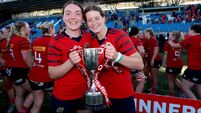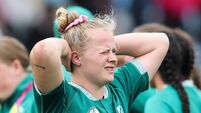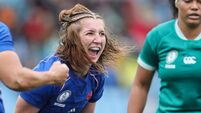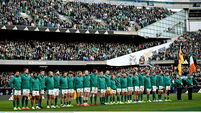New university hub model to help women's rugby target stars from other sports

IRFU Head of Women’s Performance and Pathways Gillian McDarby. Picture: INPHO/Morgan Treacy
THE IRFU is going down the university hub route to create four provincial Centres of Excellence for the women’s game which it also hopes will eventually produce new All Ireland League (AIL) teams.
And they have also deliberately chosen third-level bases in the hope of enticing more talent from other sports.
The University of Limerick, Dublin City University, NUI Galway and Queens University will host these provincial centres and SETU Carlow may yet also play a part for Leinster women.
It’s the first strategic step towards creating more local pathways and AIL potential in the women’s game and stems from the reviews made in the wake of Ireland’s top players penning an open letter of complaint about investment and commitment to the IRFU in 2021.
Each of the four women’s provincial Centres of Excellence will be staffed by an Athletic Performance Coach and a Pathway Talent Coach.
Gillian McDarby, who was appointed as the IRFU’s first Head of Women’s Performance and Pathways last August, is interviewing candidates for those jobs this week.
“We’re hopeful that those roles will begin in early May and they’ll be set up in a university structure,” she said.
“We’re focussing on setting up these Centres of Excellence within universities so we can attract other athletes. It’s the ideal demographic, 16-23 (years of age). We can also look at scholarship partnerships and intern programmes and just have a better volume of athletes coming through the system.”
The current women’s pathways are criticised for being far too Leinster-centric.
Only two of the Ireland squad which begins their Tik Tok Six Nations campaign against Wales next Saturday play their club rugby outside Leinster or England; one in Munster and one in Ulster.
Anyone on an IRFU contract currently has to base themselves in Dublin, resulting in many Connacht and Ulster players playing their club rugby in Leinster, which adds to an imbalance in the AIL and the inter-pros.
“The purpose of the Centres of Excellence is to attract and retain players locally,” McDarby said.
“Putting them within university structures will provide them with opportunities to train within their province. If they’re currently in school in Connacht, for example, they can identify that ‘I can go to NUIG and have a rugby career and can be developed to national level within that Centre of Excellence.’ At the moment they don’t have that opportunity.
“It will also attract other players from other sports into the system which we currently can’t do within the provincial structure,” she added.
“The vision is for those universities to become AIL teams. That’s the model. It won’t happen overnight. We’ll have to get the structures up and running and the competition models within those universities up and running first.”
The IRFU now provide paid contracts for female players worth between €15,000-€30,000 but Ireland start their 2023 Six Nations campaign without stars like Beibhinn Parsons and Eve Higgins who are currently concentrating on Sevens where the Irish team is tantalisingly close to Olympic qualification for 2024.
Among the recommendations made in the IRFU’s 52-page Women in Rugby report last December was the restructuring of the 2024 AIL into a two-tier competition with six teams in each division but that may not yet happen.
Amanda Greensmith, the IRFU Women’s Development Manager, revealed that her consultations with women’s AIL clubs about the ‘six and six’ has had a “mixed reaction” and the domestic league structure for 2024 is still under review.















